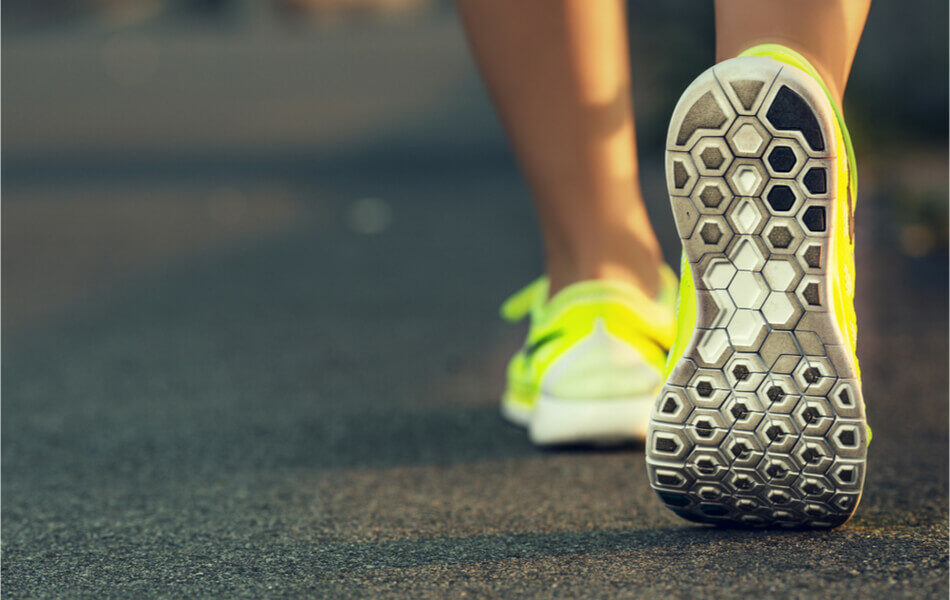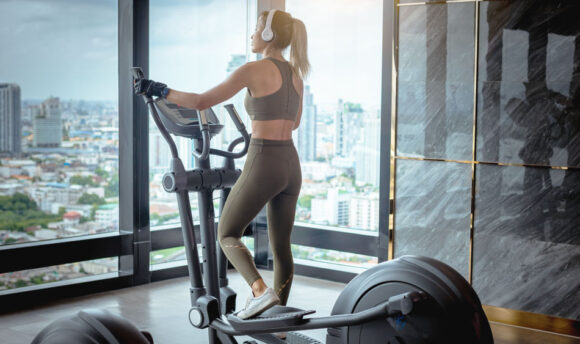How Long Does It Take to Walk a Marathon?
How long does it take to walk a marathon and what can you do to prepare for it to reach the finish line with ease?

Walking a marathon has numerous benefits: you can enjoy the fresh air and physical activity and become stronger. However, it is reaching the finish and completing a huge goal that makes the activity so attractive for many.
In this article, we will learn how much time it takes to walk a marathon. We have also prepared some useful marathon training tips on how to prepare for a walking marathon. Discover the dos and don’ts during the marathon to make sure you perform your best on the race day.
How Long Does It Take to Walk a Marathon?
The straightforward answer will be from 6–9 hours. The branch is quite broad because the completion time is influenced by numerous factors: speed, breaks, and the route.
Brisk marathon walkers will be able to get to the marathon finish in 6–7 hours. Marathon walkers with the average walking speed will reach the goal in 8 hours, and those who have a slower pace might need 9 hours or more.
If you have not trained before the marathon and have a sedentary lifestyle, you will need a lot of breaks for rest, and it will take more time to get to the finish. It can also slow you down because it is harder to pick up the pace after the break.
What Is the Average Walking Pace?
The average pace for adults is 3–4 miles per hour. It is a speed when the person walks purposefully somewhere, but they are not late. Such walking helps lose weight and improve overall physical well-being.
However, the average does not mean much since the individual marathon walking pace depends greatly on numerous factors.
Factors That Influence a Marathon Walking Pace
The walking pace differs from person to person. The end result depends on:
Height
You have probably noticed that the tallest person in the group is always ahead of the others during the walks. Even though you make the same amount of steps, they still end up being in front.
It has everything to do with the length of the legs. Taller people have longer legs and, consequently, longer steps. As a result, they make the same effort but walk faster.
Weight
The weight affects the walking pace due to gravity-related reasons. Thus, the heavier your body is, the more energy is used to move it.
Age
The older the person is, the slower their average pace. It mostly depends on the fact that adults do not get as much exercise as kids do.
Moreover, while the human body ages, the muscles lose flexibility, bones and joints lose strength, and heart function declines as well. Thus, mature people need to make more effort to perform physical exercises compared to younger people.
After the age of 50–60, the walking pace significantly slows down because of the aging process.
Environment
Big cities have a faster way of life and, therefore, people get used to being busy all the time and walking faster on the regular. Even if you are not busy, others move way quicker, and it is simply dangerous or uncomfortable to slow down.
What Is the Difference Between Brisk and Regular Walking?
Walking briskly means walking a bit faster than you are used to. However, the speed of brisk walking will be different for different people: it depends greatly on your level of physical activity.
We can define brisk walking as walking at a speed at which your heart and breathing rate goes up a bit. You may notice some sweating or get out of breath. According to MayoClinic, such moderate-intensity exercises as brisk walking uses 50–70% of your maximum heart rate.
People undergo different levels of physical activity and, therefore, have different levels of endurance. As a result, they will have different speeds at which their heart rate goes up.
The brisk walking will get you faster to the finish and have the same low risk for your joints. It can also help you build up endurance.
What Is Harder: Running or Walking a Marathon?
Running a marathon is a harder task than a marathon walk. Running requires a lot of training in advance to build up not only endurance but muscle strength as well.
If you run with no training, you may end up in the hospital with muscle strains, fractures, and joint damage. It is also not likely that you will be able to finish the marathon at all since you will lack endurance and hit a so-called dead-end when you cannot physically run anymore.
The situation is different when it comes to marathon walking. There is still a possibility of an injury, but walking does not affect the muscle and joints as badly. You will also get out of breath much later, and the heart is not challenged as much.
At the same time, you have to be ready so that you will spend much more time walking a marathon. It is extremely difficult for many people to stay up and going for so long. Sometimes, it also happens in challenging weather: it is either too hot and sunny or too windy.
Does Walking a Marathon Require Training?
It greatly depends on how much physical activity you have had before. If you have a job that requires long-distance walking all the time or if you try to spend your free time actively, you may not need training as such.
However, if you have a sedentary lifestyle and suddenly decide to walk 26.2 miles, you may suffer bad consequences. It can turn a whole event into an extremely stressful one and give you bad injuries.
It is recommended to incorporate marathon preparation into your training schedule before any long walk. It will be good for both your mental and physical health.
How to Prepare to Walk a Marathon?
Marathon training does not take away much time and equipment, but it definitely saves you a lot of trouble in the future.
Choose the right walking gear
According to statistics, 35% of customers worldwide evaluate the cushioning of running shoes as very important, and 32% evaluate it as an extremely important factor while choosing the product. Good cushioning and support save the legs from fatigue and help avoid blisters.
Clothes should fit the weather outside, so you don’t feel too hot or too cold. Make sure that clothing is not too tight as it can negatively impact blood circulation. Take a look at the basic gear for marathoners to buy in 2022.
Don’t forget about the accessories needed for a marathon, such as a belt for the keys, a fitness tracker, and a small bag for carrying snacks and a water bottle.
Proper warm-up before you walk a marathon
The main idea of a warm-up is to gently set the muscles in motion. It normally takes around 3 minutes to get ready, but it has a great positive effect: the start of the long walk is much easier, and the possibility of an injury is much lower.
You can start with ankle circles, leg swings, pelvic loops, and arm circles and finish with small jumps that require some previous warm-up.
Stretch before and after
Stretching goes right after the warm-up and is an essential part of marathon training. Stretching 15 minutes before exercises will reduce the possibility of injury and boost your walking performance. It’s recommended to stretch from 5 to 10 minutes for the best results.
You should also do it after you walk a marathon to relieve muscle tension, improve blood flow, and reduce lactic acid.
Overall, you can stretch hamstrings, ankles, calves, and groin. They take part in walking the most, so it makes sense to focus on them.
Walk often to get used to the activity
You will feel better on the marathon or half-marathon day if you have already walked a lot. It is recommended to start training 3–5 months in advance. You should learn how to walk comfortably for long marathon distances and, afterward, pick up the pace to learn how to walk briskly.
It is also better to choose hilly lanes and train in different weather to get ready for any scenario.
Go for a trial walk before the marathon
A trial long-distance walk is your final part of the training before the race day. It is your chance to understand whether the training was actually sufficient for you to complete a full marathon with no injuries.
Try to walk a marathon or half-marathon at your own pace. Make sure to test all the snacks you have planned in advance too!
Just make sure you do not do it a day before the marathon itself. You will have no strength to go through a big challenge two days in a row and eventually fail, even though you trained a lot. Go a month or two weeks in advance.
Dos and Don’ts Throughout the Marathon
Your actions during the marathon have a huge effect on your end result as well. Let’s learn how to behave to finish with no injuries or extreme fatigue.
Do stay hydrated before and throughout a marathon
Hydration helps you keep the blood flowing through the body and reduce the heat produced by the exercise. It will reduce fatigue in the long run.
According to the study conducted by The American College of Sports Medicine, a person needs to drink from 5 to 12 ounces of fluids every 15 to 20 minutes of a marathon.
Do snack
Snack equals energy, and you will need some, considering how many calories you burn during the marathon.
Do walk a marathon at your regular pace
You can try different paces during the training, but the marathon is not a great field for experimenting. You cannot complete the track because of fatigue, so try to stick to an average walking pace, which is 3.1 miles per hour.
Don’t try new snacks
It is better to stick to what you and your stomach are used to. Otherwise, you may lose to diarrhea.
Don’t over-snack or over-hydrate
Too many snacks and water is not a good idea since you will feel too full, and it is hard to walk with that feeling.
A Word From Our Coach
Walking a marathon is a great idea: it is a way to complete a huge goal without having to invest too much into preparations.
It is still important to train properly to avoid injuries and prepare yourself mentally for all the hardships along the way. It can be about fatigue, negative thoughts about not being able to complete the marathon, constant comparisons to others, and minor pains within the body.
Remember that everyone’s first experience is not perfect, and do not go too hard on yourself.
Conclusion
Walking a marathon is easier than running, but it still requires some training and basic knowledge about the process, snacks and water, expectations, and behavior during the marathon itself.
As long as you come with proper training and motivation, you can perform great on race day.

















































 Select your language:
Select your language: 








